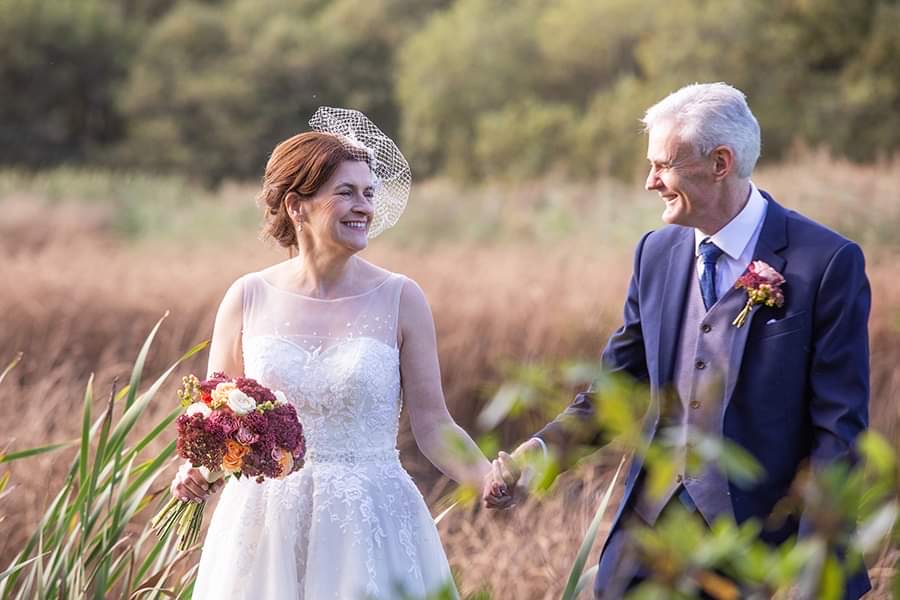Since I became a History Girl I have often wished I had paid more attention to the stories my gran and great aunt Annie told me. As a child I had an endless fascination for ‘the olden days’ but I didn’t know then how much my creative and intellectual life as an adult would revolve around women’s social history. So many times, writing novels set in the Belfast of their youth, I’ve thought of them, growing up in the streets I was describing. Without them and their stories, I might not have grown up to become someone who wrote historical novels.
 |
| Gran and Aunt Annie c. 1920 |
Recently, having married at the unfashionably late age of 53, I’ve been considering, not their long-ago childhoods, but their young womanhood between the two world wars. Aunt Annie never married, became the spinster daughter keeping house for her widowed mother and unmarried brother, with what reluctance or enthusiasm I will never know. I never asked. I didn’t know I would become fascinated by spinsters, or that I would spend decades of my adulthood uncoupled and independent, like Aunt Annie.
Gran married during World War 2; she was in her thirties, Granda a little older. This was above average for the times, and, again, I don’t know why. I know that Granda, the oldest son, had family responsibilities; perhaps they precluded him leaving home and marrying earlier. I have no idea if he and Gran had a long courtship or if they had had previous sweethearts. Why didn't I ask? When I cleared out some old photos recently I found many of Gran in the 1930s with a jolly-looking crowd of young adults from the Christian Endeavour. They seemed to go on lots of jaunts and picnics and in more than one photo she seemed to be close to a young man who wasn’t Granda. But again, I don’t know. These might have been simply pals. Gran and her chum Ellie married brothers, Granda and Uncle Gordon, but I don’t know who introduced whom. I don’t know if Aunt Annie, three years younger and destined not to marry, was jealous or indifferent, if she had suitors, heartbreaks and disappointments or if she always planned the single life. I don’t know if her proclivities, if she ever explored them, were for girls or boys. I do know she would be extremely shocked at my writing such a thing.
 |
| Gran and Granda -- not yet engaged |
I’ll never know now, and it doesn’t matter. But getting married at 53 after 24 years of living alone and about 20 years of single celibacy has made me think a lot about marriage trends, and about what leads to some people being coupled while others stay alone. In my own case, I married an old friend who had been widowed. Which in itself sounds quite old-fashioned.
When Gran was my age I hadn’t been born, but photos from the 1960s show that she was certainly preparing for the grandmotherly stage of life. She was grey-haired, comfortably plump, wore a pinny and devoted herself to the domestic and the church. Every year I look more ridiculously like her, and nowhere is this clearer than in our respective wedding photos, even though she is almost twenty years younger.
 |
| Two brides, 2021 and 1942 |
Gran married in a pretty but serviceable frock she would get good wear out of. Not only was it wartime but at 35 she would have considered it unseemly to go for something more bridal. I don’t know what she would have made of me at 53. Mutton dressed as lamb, probably. My hair is dyed to disguise the grey, I am over a stone lighter and a dress size smaller than I was in my thirties, and I run and go to the gym partly to keep Gran’s matronly figure at bay. I chose a vintage-style wedding dress that was probably a bit young for me but it was pretty and flattering so I didn’t care. Perhaps that’s the biggest difference between our generations: the not-caring-what-people-think. I am very domesticated, it’s true – I made my own wedding cake and the shawl I wore over my dress, so perhaps she wouldn’t have entirely disapproved.













